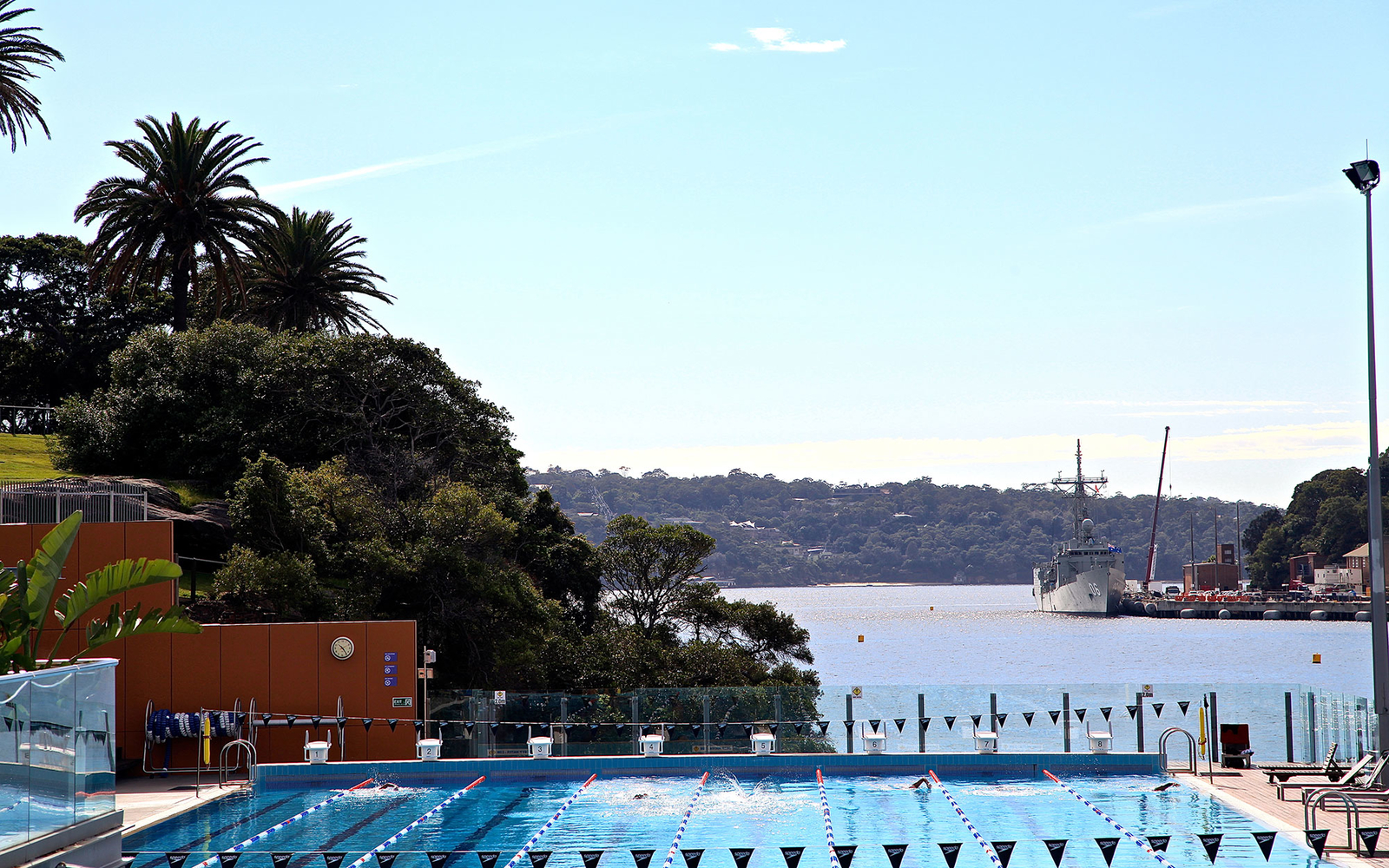
The Sydney Harbour has been the site of several bull shark attacks throughout the years. But these eight swimming holes and pools offer a safe way to cool off.
Swimming is synonymous with vacationing in Australia. But swimming in the famous Sydney Harbour can be risky due to the bull sharks that feed in its deep-water pockets and give birth in its shallow estuaries. Following a spate of shark attacks more than a century ago, a safety initiative was launched in Sydney that led to the construction of netted bathing pavilions and pools built in and around some of the harbor's most beautiful beaches and coves. Here, a primer on eight of the best—and safest—swimming holes in this lovely coastal city.
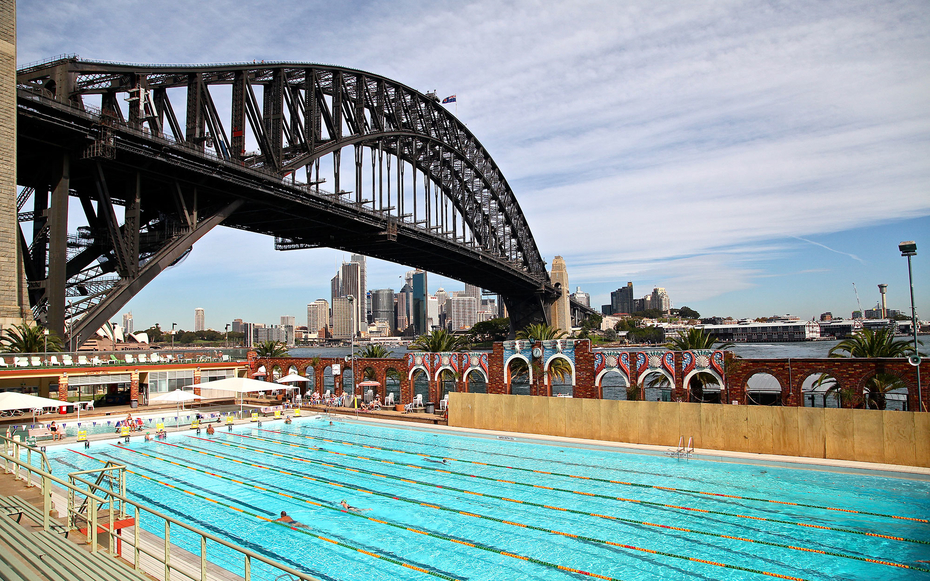
The iconic North Sydney Olympic Pool is sandwiched between the northern pylons of the monolithic Sydney Harbour Bridge and the Luna Park entertainment precinct on Sydney's lower north shore. Built in 1936 at a cost of £47,000 ($10 million in today's money) as part of Australia's Depression Relief Scheme, the pool is also one of Australia's most important art deco structures—a cornucopia of polychromatic brickwork, stylized columns, intricate Romanesque tiling, and playful plaster figurines of frogs, seagulls, and swordfish. And because it's heated, swimmers can enjoy the pool all year. There's also a heated 25-meter indoor pool with a sauna. Admission is $7.10 for adults and $3.50 for children.
A short drive from Milsons Point on the western side of the Cremorne Point sits MacCallum Pool, the smallest and quaintest of Sydney's harbor-side swimming holes. Originally a rock pool, it was built in the 1920s by local philanthropist Hugh MacCallum in conjunction with the North Sydney Council. Patrons originally paid five shillings a year for membership badges that were sewn onto their bathing suits, with the funds paying for upkeep and maintenance. Today it's free.
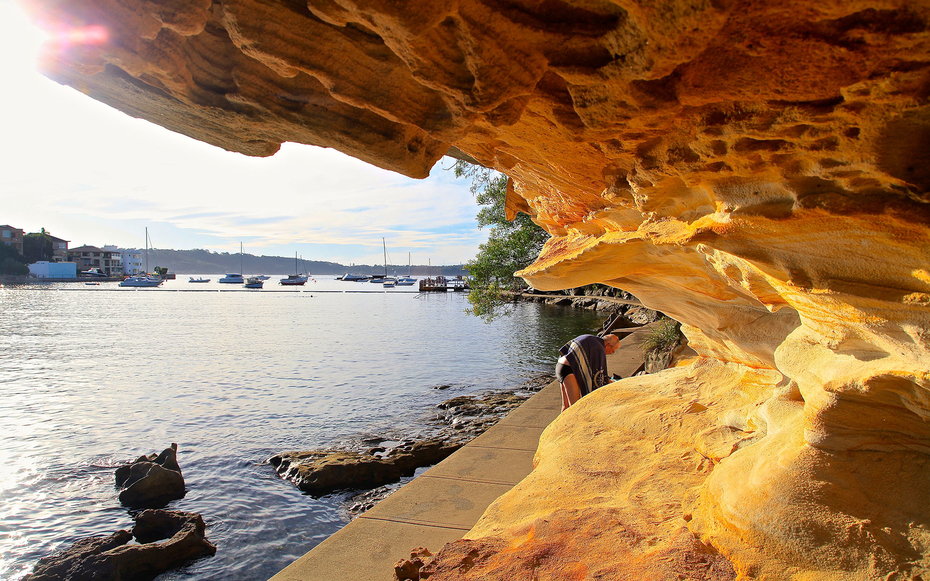
Set on the south end of Balmoral Beach, this U-shaped structure with shark netting was erected in 1898—making it the city's oldest, continually used bathing pavilion. Five years ago, Mosman Council completed major restorative works that replaced most of the structure's old timber piles and added more than 3,000 feet of wooden decking. The Balmoral Jetty and Baths have a real holiday-by-the-seaside feel; the spot is the perfect place for those looking to escape the hustle and bustle of the city.
This 50-meter, eight-lane saltwater pool sits on the western bank of Woolloomooloo Bay (where a navy diver lost an arm and a leg during a 2009 bull shark attack). Visitors are unlikely to see sharks gliding through the water, but they can marvel at the warships docked at the nearby Royal Australian Naval base while doing laps. Facilities include a 20-meter children's pool, a poolside café, and a glass-fronted studio where yoga and martial arts classes are held daily. The Andrew Boy Charlton (ABC) Pool is open from September 1 to April 30. Entry is $6 for adults and $4 for kids.
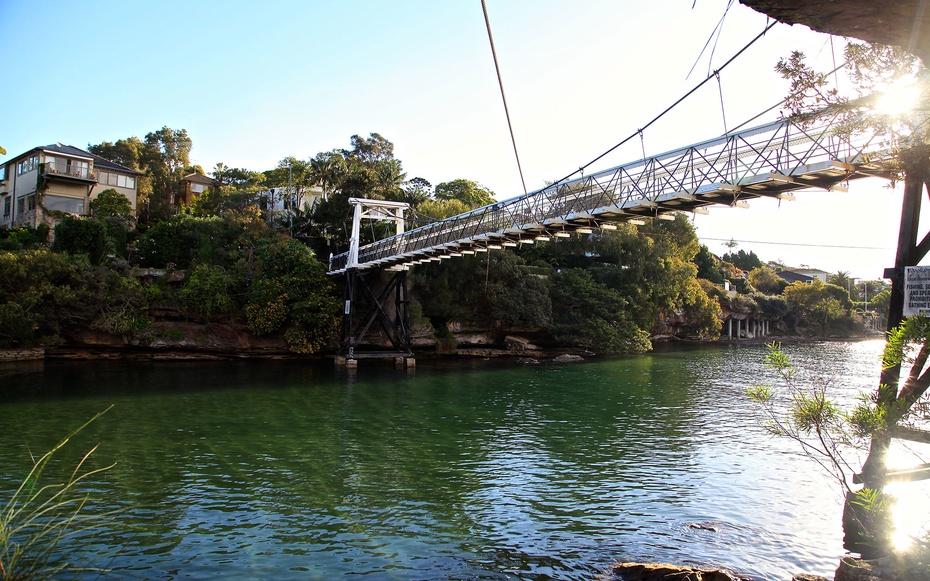
This family park is set in a valley that funnels into native bushland, a small creek, and a path that leads to a waterfall. The beach is nothing special—more of a muddy tidal flat—but it opens into a stunning limestone-edged bay with a century-old cable suspension bridge linking its banks. During the summer, a 600-foot-long shark net makes Parsley Bay a popular spot for swimmers, snorkelers, and scuba divers. The net is removed from June to September to allow for the flushing of the bay.
There are one or two safe places to swim west of the city, but the Murray Rose Pool near Double Bay is the standout. Until a few years ago, this netted tidal enclosure with spectacular city views was called Redleaf Pool. In 2012 it was renamed in honor of Murray Rose, a British-born swimming champion who won three gold medals at the Melbourne Olympics in 1956. Redleaf was where Rose fell in love with swimming; he had his first lesson here at the age of five, won his first race here at 10, and continued swimming here until his death three years ago.
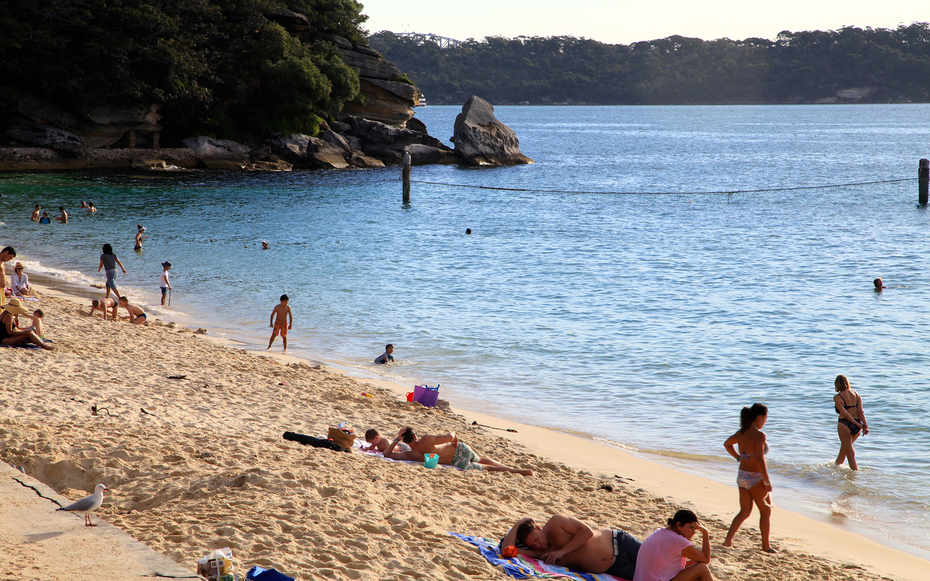
Before the arrival of European settlers, this leafy green space was divided by a small creek that flowed into a lagoon, creating an ideal campsite with abundant shelter, water, and food for the Birrabirragal, an Aboriginal clan that lived in these parts. Nielson Park continues to attract Sydney-siders today, who flock here to swim in the netted enclosure fronting the aptly named Shark Beach and watch the start of the Sydney to Hobart Yacht Race on December 26, a public holiday celebrated around the country as Boxing Day.
“We had the satisfaction of finding the finest harbour in the world,” Captain Arthur Phillip, the first governor of Sydney, wrote on discovering Sydney Harbour in 1788. Before setting camp at Circular Quay, the current site of the Sydney Opera House, Phillip left a few of his men on Camp Cove, a sugar-white beach near the mouth of the harbor. A short walk from Camp Cove are the Watsons Bay Baths—the most picturesque bathing enclosures found anywhere on the harbor. Rebuilt in 2010, this Olympic-size swimming enclosure offers deep-water wheelchair access courtesy of an ingenious floating boardwalk. There are also sunbathing pontoons, an al fresco café, toilets, changing rooms, a small public library with free Wi-Fi, plus plenty of great spots where children (and adults) can jump into the water.